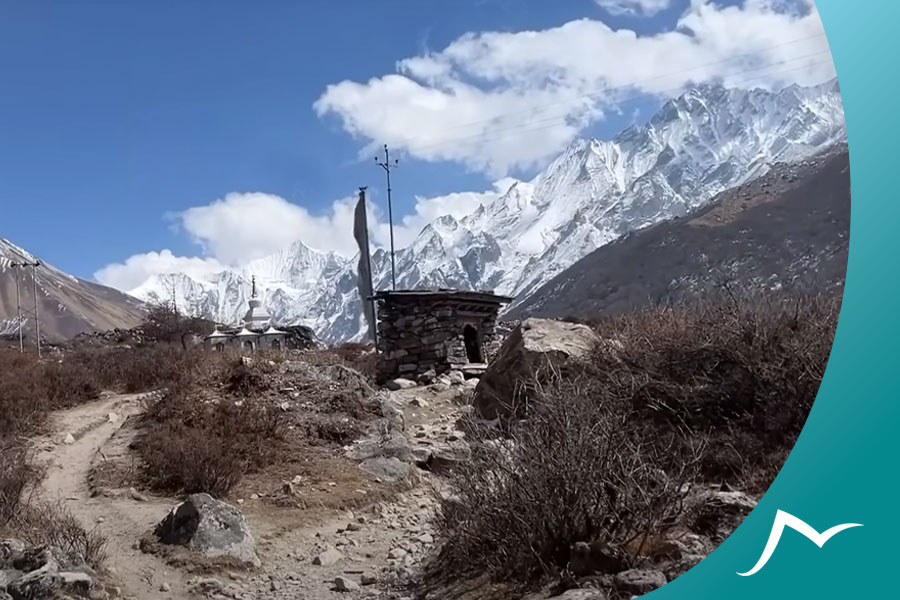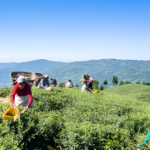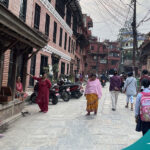While doing different types of easy and challenging treks, a plan for Lantang trekking was formed in my mind. I have heard from many people that Lamtang trekking is very tough trekking. Experienced friends also said that this trekking is challenging. But I completed Lantang trekking. How difficult is the Lantang trek? I will share my experience in this blog post.
Trekking to Langtang, located in the northern region of Nepal, is an unforgettable experience that combines adventure, culture, and stunning natural scenery. However, it’s essential to recognize that the trek is not for the faint of heart and requires physical and mental endurance. In this blog, I will share my personal story of trekking to Langtang and provide insights into the trek’s difficulty level.
The Langtang Trek covers a distance of 76 kilometers, beginning in the small village of Syabrubesi and ending at Kyanjin Gompa, a famous Buddhist monastery. The trek typically takes around 7-10 days to complete and is a popular route in Nepal due to its breathtaking landscapes and cultural experiences.
The main points of this blog will cover the physical and mental difficulty of the Langtang Trek, preparing for the trek, navigating the route, accommodation and facilities, cultural and natural beauty, and safety considerations. Whether you’re an experienced trekker or are embarking on your first adventure, this blog will provide valuable insights into the Langtang Trek’s difficulty level and help you prepare for an unforgettable journey.
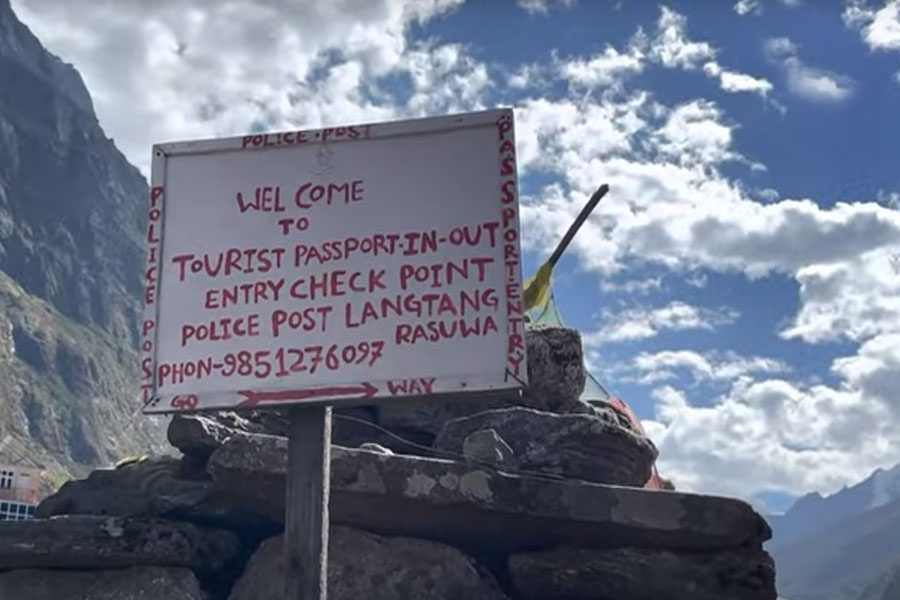
Physical and Mental Difficulty of the Langtang Trek
The physical difficulty of the Langtang Trek cannot be overstated. The trek involves long days of walking on rugged terrain, steep ascents, and high altitude, which can all take a toll on your body. Proper preparation and fitness are essential for completing the trek.
One of the most challenging aspects of the Langtang Trek is the altitude. The trek climbs to a maximum height of 4,984 meters at Tserko Ri, which can cause altitude sickness. The symptoms of altitude sickness include headache, nausea, and dizziness. Trekkers should plan for rest days and increase their water intake to acclimatize to the altitude. It’s essential to listen to your body and descend if symptoms become severe.
In addition to altitude, the trek’s steep ascents can also be challenging. The trail includes steep inclines and steps that can be difficult to navigate, especially at higher altitudes. Trekking poles can help maintain balance and reduce the strain on your knees and legs.
The Langtang Trek also requires mental fortitude. Trekking for days in a remote and unfamiliar environment can be mentally taxing. Homesickness, altitude sickness, and physical exhaustion can all contribute to mental challenges. It’s essential to take breaks when needed, stay positive, and focus on the beauty of the journey.
During my Langtang Trek, I faced both physical and mental challenges. One of the most difficult moments was climbing Tserko Ri, where the high altitude made breathing difficult. However, the sense of accomplishment upon reaching the summit was worth the struggle. I also experienced homesickness, but talking to my fellow trekkers and focusing on the beauty of the scenery helped me stay positive.
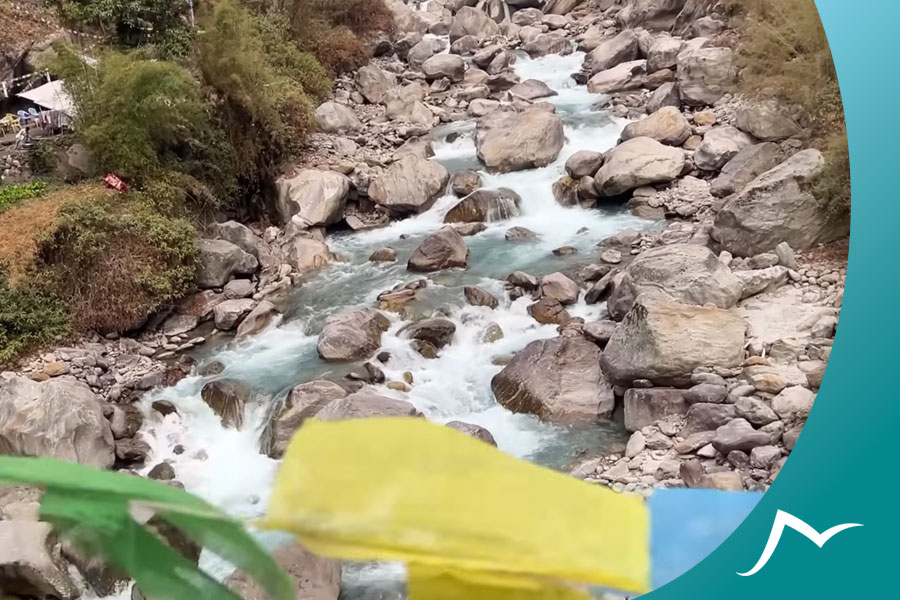
To cope with mental difficulties during the trek, it’s important to have a support system. Talking to fellow trekkers and guides can provide a sense of community and encouragement. Additionally, taking breaks and practicing self-care, such as meditation or journaling, can help alleviate stress and maintain mental well-being.
In conclusion, the Langtang Trek is physically and mentally demanding, but it can be an incredible and rewarding experience with proper preparation and a positive mindset.
Preparing for the Langtang Trek
Preparing for the Langtang Trek is crucial for a successful and enjoyable experience. Both physical and mental preparation is essential to ensure you can handle the demands of the trek.
Physical preparation should include cardiovascular exercise, strength training, and hiking practice. Cardiovascular exercise, running or cycling, can improve your endurance and lung capacity, which is essential for the high altitude of the trek. Strength training, mainly exercises that target the legs and core, can help you tackle the steep ascents and descents of the trail. Hiking practice, preferably on similar terrain, can help you adjust to the demands of the trek.
Mental preparation is also essential. The trek can be mentally challenging, so having a positive mindset and strategies for coping with stress is important. Meditation, visualization, and positive self-talk can all be helpful tools for mental preparation.
In my personal experience, increasing my cardiovascular exercise and practicing yoga helped me prepare for the trek. I also gradually increased my hiking practice and included elevation gain in my training hikes.
Navigating the Langtang Trek
Navigating the Langtang Trek requires careful planning and attention to physical and mental demands. The trek begins in Syabrubesi and follows the Langtang River through the Langtang Valley, passing through lush forests, scenic villages, and stunning mountain views.
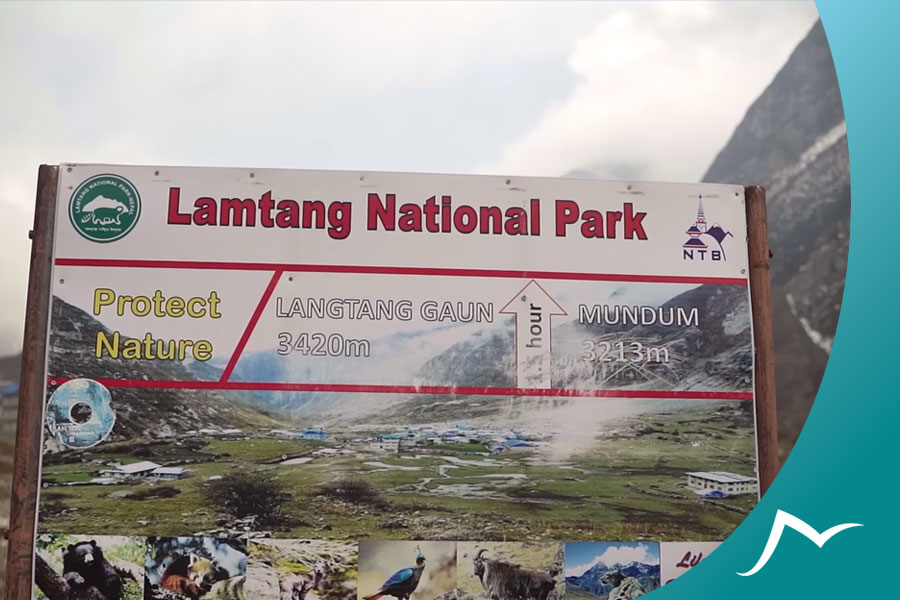
The terrain of the Langtang Trek is challenging, with steep ascents and descents, rocky terrain, and high altitude. To manage these demands, it’s important to pace yourself, stay hydrated and nourished, and take breaks when needed. Mental strategies, such as positive self-talk and visualization, can also help you stay motivated and focused during the trek.
In my personal experience, taking breaks to rest and refuel helped me manage the physical demands of the trek. I also found it helpful to stay positive and focus on the beauty of the surroundings, even when faced with challenging terrain.
Overall, navigating the Langtang Trek requires careful planning, physical and mental preparation, and attention to the demands of the terrain. With these tips and strategies, you can successfully navigate the trek and enjoy the stunning beauty of the Langtang Valley.
Accommodation and Facilities on the Langtang Trek
Accommodation and facilities on the Langtang Trek can vary depending on the route and trekking agency. Tea houses are the most common form of accommodation, offering basic rooms with shared bathrooms and common areas for meals and relaxation. Some tea houses may also provide hot showers and charging stations for electronic devices.
During my personal experience on the trek, I found that the tea houses were simple but comfortable, providing a warm and welcoming atmosphere after a long day of hiking. The shared spaces allowed for socializing with fellow trekkers and learning about the local culture.
When choosing accommodations on the Langtang Trek, it’s essential to consider budget, location, and amenities. Researching and booking in advance can also ensure availability during peak trekking seasons.
You can find the best accommodation and facilities to enhance your trekking experience with careful planning and consideration.
Cultural and Natural Beauty of the Langtang Trek
The Langtang Trek offers a unique blend of natural and cultural beauty, making it a popular destination for trekkers. The trek passes through lush forests, alpine meadows, and snow-capped peaks, providing breathtaking views of the natural surroundings. The Langtang region also has diverse flora and fauna, including the endangered red panda.
In addition to the natural beauty, the trek also offers a glimpse into the region’s rich cultural heritage. The Tamang and Sherpa communities have inhabited the area for centuries and have preserved their unique traditions and customs. Along the trekking route, trekkers can visit traditional villages, monasteries, and museums to learn more about the local culture.
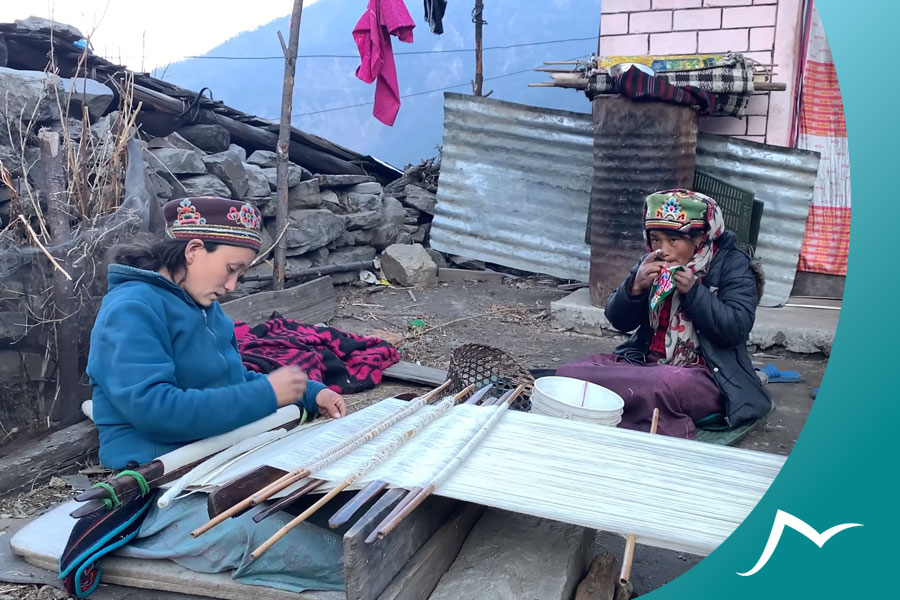
During my personal experience at the Langtang Trek, I was struck by the region’s beauty and the local people’s warm hospitality. It’s essential to engage with local culture respectfully and preserve the area’s natural beauty by practicing responsible tourism.
Safety Considerations for the Langtang Trek
Safety should always be a top priority when planning for the Langtang Trek. This trek can be physically and mentally demanding, and safety considerations must be considered. One of the most significant safety concerns is altitude sickness, which can be fatal if not appropriately addressed. Acclimatizing appropriately and listening to your body to prevent altitude sickness is essential. Weather conditions can also pose safety risks, such as landslides or snowstorms. It’s crucial to stay informed about weather conditions and adjust your plans accordingly.
Knowing when to turn back or take a break can significantly prevent exhaustion or injury. Furthermore, bringing the right gear and equipment is essential, such as a first aid kit and emergency supplies.
Safety should always come first, even if it means altering your plans or itinerary. By taking safety considerations seriously and staying informed, you can better enjoy the beautiful Langtang Trek while minimizing risks.
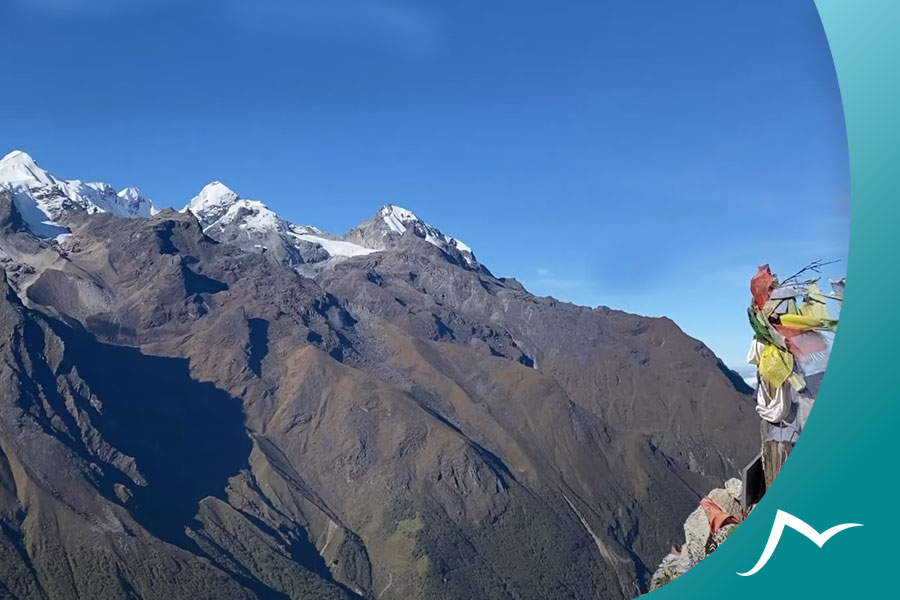
FAQs
What type of gear is essential for the Langtang Trek?
Essential gear for the trek includes sturdy hiking boots, warm layers, a waterproof jacket, a backpack, a hat and gloves, a water bottle, and a headlamp.
How many days does the Langtang Trek typically take?
The trek can take anywhere from 7 to 12 days, depending on the route and pace of the trekker.
Is it safe to trek alone in Langtang?
It is generally not recommended to trek alone in Langtang due to the risk of accidents and illness. It is safer to go with an experienced guide or in a group. You may read post ‘Unraveling the Beauty of Self-Discovery: A Solo Travel in Nepal’ to know more about solo travel in Nepal.
What is the best time of year to do the Langtang Trek?
The best time of year to do the trek is during the spring (March to May) or fall (September to November) when the weather is dry and stable.
Can I do the Langtang Trek if I have no prior trekking experience?
It is possible to do the trek without prior experience, but it is essential to train physically and mentally beforehand and to go with an experienced guide or group.
Is it necessary to hire a guide for the Langtang Trek?
Hiring a guide is not mandatory but recommended for safety and navigation purposes.
What are the costs associated with the Langtang Trek?
The costs of the Langtang Trek vary depending on factors such as accommodation, food, and transportation, but a rough estimate is around $25-$30 per day.
Is altitude sickness a common problem during the Langtang Trek?
Altitude sickness can be a problem during the Langtang Trek, especially as you ascend to higher altitudes. It’s essential to acclimatize properly and take necessary precautions.
Can i shoot a film on Langtang national park?
Yes, you need to obtain filming permits from the Nepal Film Development Board to shoot a film at Langtang National Park. Follow park regulations and minimize impact.
Can children or older people do the Langtang Trek?
The Langtang Trek can be challenging and demanding, so it may not be suitable for young children or older people. It’s essential to consult with a doctor before embarking on the trek.
In terms of difficulty level, How difficult is the Langtang trek?
The Langtang Trek is considered moderate in difficulty compared to other treks in Nepal, such as the Everest Base Camp Trek or the Annapurna Circuit Trek.
Can I trek the Langtang region independently, or do I need to book through a travel agency?
It’s possible to trek the Langtang region independently, but booking through a travel agency or hiring a guide is recommended for safety and convenience.
Conclusion
The Langtang Trek is a challenging but rewarding adventure that requires physical and mental preparation and a commitment to safety. The trek offers stunning natural beauty and opportunities to engage with the local culture but presents various difficulties, such as altitude sickness and steep terrain. Proper preparation, including physical conditioning and mental fortitude, is essential for success. During the trek, it is vital to stay safe and make choices that prioritize health and well-being. Despite the challenges, the experience of the Langtang Trek is unforgettable and enriching.
For anyone considering the trek, I encourage you to take the leap and embark on this incredible journey. With proper preparation and a positive attitude, you can overcome difficulties and make memories that will last a lifetime.
